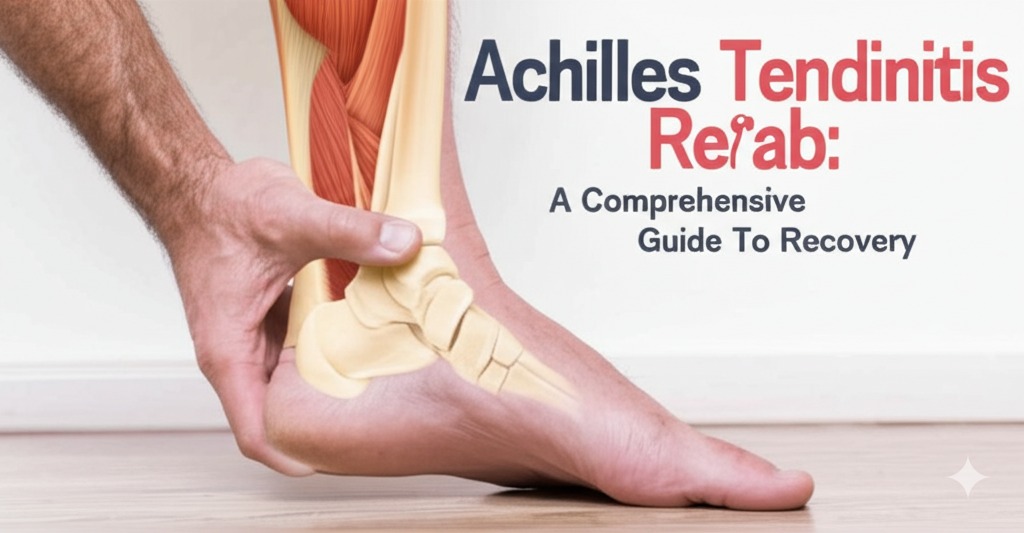Introduction
Achilles tendinitis is a common overuse injury that affects the Achilles tendon, the thick band of tissue connecting the calf muscles to the heel bone. It often occurs in athletes, runners, and individuals who suddenly increase their physical activity. If left untreated, it can lead to chronic pain and even tendon rupture. Fortunately, with proper rehabilitation, you can recover and regain full function. In this guide, we will explore the best strategies for Achilles tendinitis rehab, including treatment options, exercises, and prevention tips.
Understanding Achilles Tendinitis
Achilles tendinitis results from repetitive stress on the tendon, causing inflammation and microtears. Common causes include:
- Sudden increase in activity (e.g., running longer distances without gradual buildup)
- Poor footwear that lacks proper support
- Tight or weak calf muscles that increase strain on the tendon
- Overpronation (excessive inward rolling of the foot)
- Aging (as tendons lose elasticity over time)
Symptoms of Achilles Tendinitis
- Pain and stiffness along the Achilles tendon, especially in the morning
- Swelling and tenderness near the heel
- A burning sensation or aching after activity
- Difficulty pointing toes or flexing the foot
Achilles Tendinitis Rehabilitation Strategies
Rehabilitation focuses on reducing pain, restoring mobility, and strengthening the tendon to prevent future injury. Follow these key steps for effective recovery.
1. Rest and Activity Modification
- Reduce or stop activities that worsen symptoms, such as running or jumping.
- Switch to low-impact exercises like swimming or cycling to maintain fitness.
- Use crutches or a walking boot in severe cases to relieve pressure on the tendon.
2. Pain Management
- Apply ice packs for 15-20 minutes several times a day to reduce inflammation.
- Take nonsteroidal anti-inflammatory drugs (NSAIDs) like ibuprofen if recommended by a doctor.
- Use heel lifts or orthotic inserts to reduce strain on the Achilles tendon.
3. Stretching and Flexibility Exercises
Keeping the calf muscles flexible reduces tension on the Achilles tendon. Try these:
Calf Stretch
- Stand facing a wall with one foot forward and the other extended back.
- Press your hands against the wall and keep your back leg straight.
- Hold for 30 seconds and repeat 3 times per leg.
Seated Towel Stretch
- Sit with your legs extended and wrap a towel around the ball of your foot.
- Gently pull the towel to stretch the back of your lower leg.
- Hold for 30 seconds and repeat 3 times per foot.
4. Strengthening Exercises
Once pain subsides, strengthening the Achilles tendon is crucial for recovery.
Eccentric Heel Drops (One of the most effective rehab exercises)
- Stand on a step with your heels hanging off the edge.
- Slowly lower your heels below the step, then return to the starting position.
- Perform 3 sets of 15 reps daily.
Toe Raises
- Stand on a flat surface and rise onto your toes.
- Lower slowly and repeat for 3 sets of 10 reps.
5. Massage and Physical Therapy
- A physical therapist can provide soft tissue massage to improve circulation and reduce stiffness.
- Foam rolling the calves can alleviate muscle tightness.
- Ultrasound therapy may be recommended in chronic cases.
6. Gradual Return to Activity
- Start with gentle walking before progressing to jogging.
- Avoid sudden increases in intensity or distance.
- Listen to your body—if pain returns, reduce activity levels.
Preventing Achilles Tendinitis Recurrence
Prevention is key to avoiding future injuries. Follow these tips:
- Wear Proper Footwear: Choose shoes with good arch support and cushioning.
- Warm Up and Cool Down: Always stretch before and after exercise.
- Strengthen Your Lower Leg Muscles: Incorporate calf and foot exercises into your routine.
- Avoid Overtraining: Gradually increase workout intensity and duration.
- Listen to Your Body: Rest if you feel pain or discomfort.
Conclusion
Recovering from Achilles tendinitis requires patience, but with the right rehabilitation plan, you can regain strength and mobility. By combining rest, pain management, stretching, strengthening exercises, and preventive measures, you can return to your activities safely and reduce the risk of reinjury. If symptoms persist, consult a healthcare professional for personalized guidance. Start your recovery today and take proactive steps to protect your Achilles tendon for the long term!

Kallie Snyder is an author at Stonegate Health Rehab, providing valuable insights, recovery guidance, and rehab resources to help individuals achieve better health and well-being.
